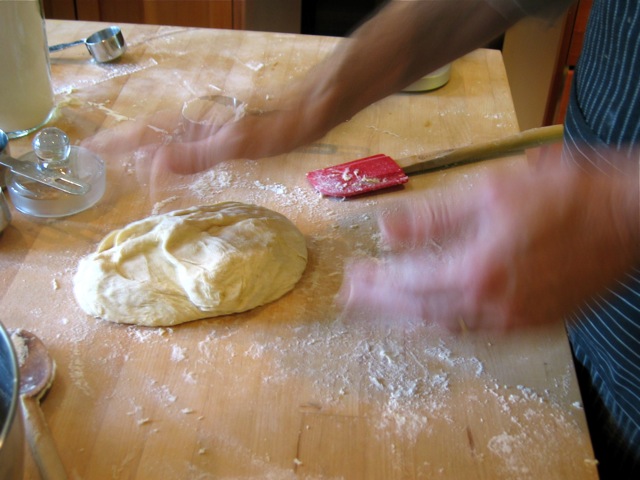
slam, l
(article, Caroline Cummins)
[%pageBreakSettings nobreak=true] Years ago, when he was a young man living in Germany, John Cunningham decided to try his hand at strudel. [[block(sidebar). h1.Featured recipe]] You've probably tried, or at least heard of, apple strudel, the rolled pastry dessert common throughout Central Europe. Gossamer-thin layers of flaky, buttery pastry dough — more like the Greek phyllo than the French pâté feuilleté — wrap around a dense filling of baked apples. Sometimes the apples are joined by nuts, raisins, or poppy seeds; sometimes not. Frequently strudel is served with a light dusting of powdered sugar, and if you're serving it in the afternoon with coffee, a scoop of schlag (whipped cream) gives it an authentic Viennese touch. Saveur magazine has a shortcut recipe for the stuff using store-bought phyllo dough. But, as Cunningham points out, frozen phyllo is very frangible, cracking and breaking easily. It's actually easier, he says, to make your own dough from scratch, then roll it out to the size of a small coffee table. Really. And how thin is it supposed to be? "Thin enough to read a newspaper through it, or at least that's what tradition says," admits Cunningham, who got the knack of strudel early and now makes about six strudels a year, starting with cherries and apricots in early summer and rolling into the fall with plums, apples, and spinach. (Yes, you can make savory as well as sweet strudels.) Because I grew up with Cunningham's daughter, Tekla, I'd seen Cunningham make strudel from scratch plenty of times. The endeavor always looked big, but not necessarily finicky, despite what an amusing profile of Cunningham in the now-defunct Seattle Post-Intelligencer thought. And so, one late afternoon this fall, I watched Cunningham do his strudel thing all over again — and then we ate the results. Here's a photo how-to. [%image slam float=center width=500 caption="Kneading the strudel dough goes faster if you slam the heck out of it on a countertop."] [%image roll float=center width=500 caption="Put a thin cotton tablecloth over a rectangular table and dust it liberally with flour; press the flour evenly into the cloth. Roll out the dough directly on the cloth."] [%image stretch float=center width=500 caption="Using the backs of your hands, gently stretch the dough into a rectangle about 4 feet long by 3 feet wide."] [%image holes float=center width=500 caption="If a few holes form around the edges, don't worry about them. Tight ribs along the edges, though, will bake up tough, so slice them off with a knife before rolling up the strudel."] [%image baste float=center width=500 caption="Baste the stretched dough with melted butter. You can also use an oil spritzer."] [%image apples float=center width=500 caption="Sprinkle breadcrumbs along one end of the dough, then cover with chopped apples, more breadcrumbs, sugar, and chopped nuts, if using."] [%image roll1 float=center width=500 caption="Carefully fold the end of the strudel dough over the apples."] [%image roll2 float=center width=500 caption="Lift the edges of the tablecloth slowly so that the strudel starts to roll up of its own accord, away from you. As you roll, tuck in the edges of the strudel dough so apples don't fall out."] [%image pan float=center width=500 caption="Recruit a few extra hands to help you lift the rolled strudel onto a greased baking sheet."] [%image pan2 float=center width=500 caption="Once the strudel is curved onto the pan, baste it again with melted butter, then bake it."] [%image reference-image float=center width=500 caption="A slice of the finished strudel, dusted with powdered sugar."] p(bio). Caroline Cummins is Culinate's managing editor.

slam, l
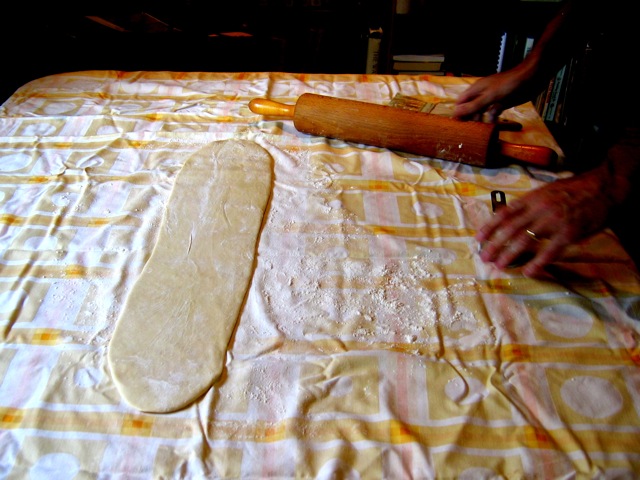
roll, l
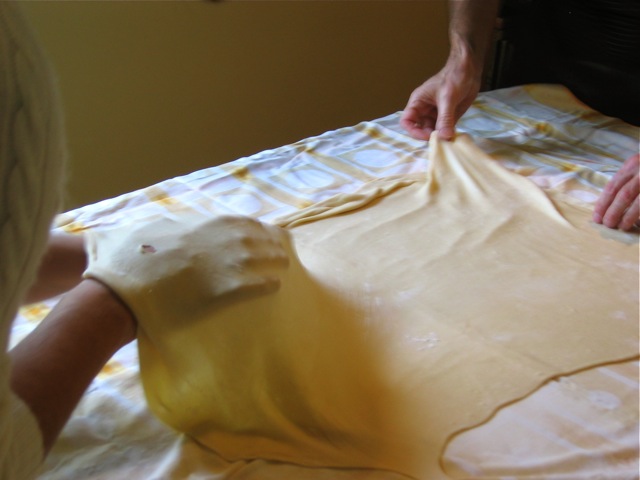
stretch, l
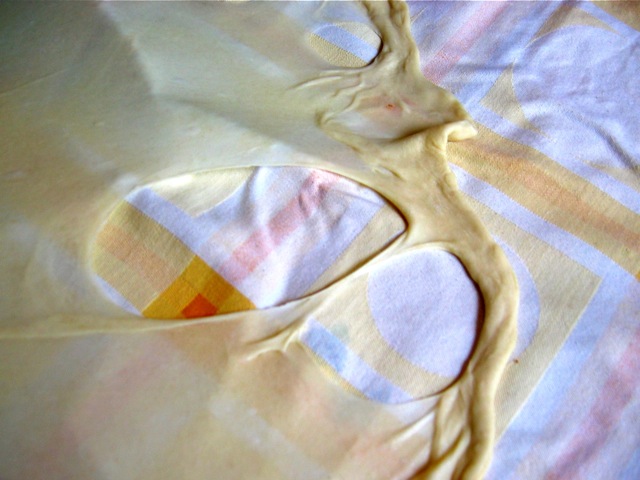
holes, l
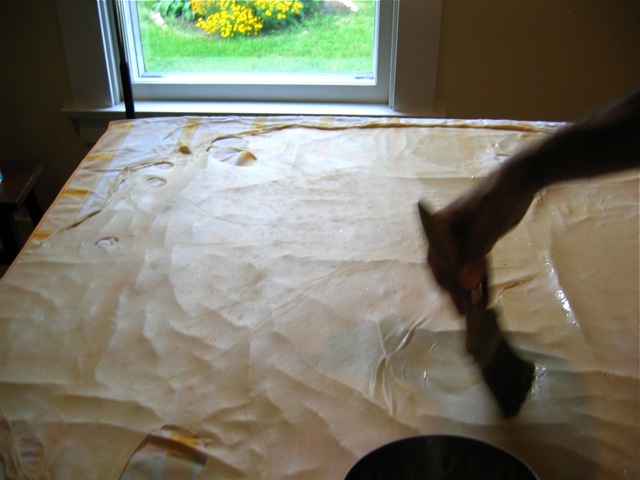
baste, l
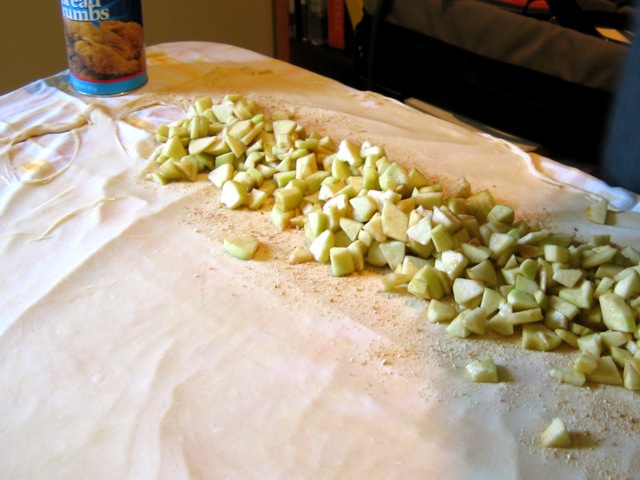
apples, l
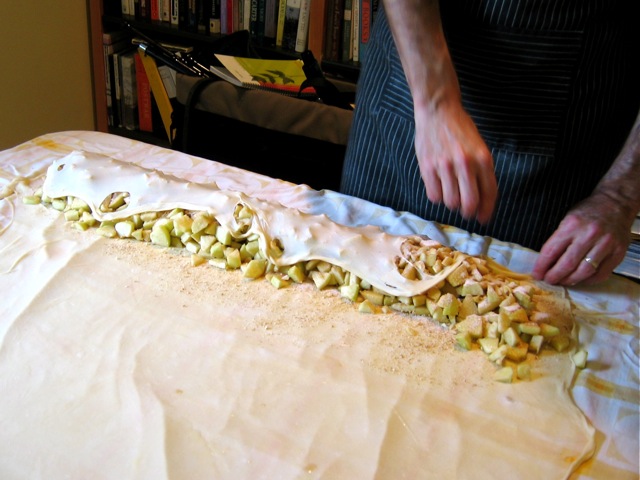
roll1, l
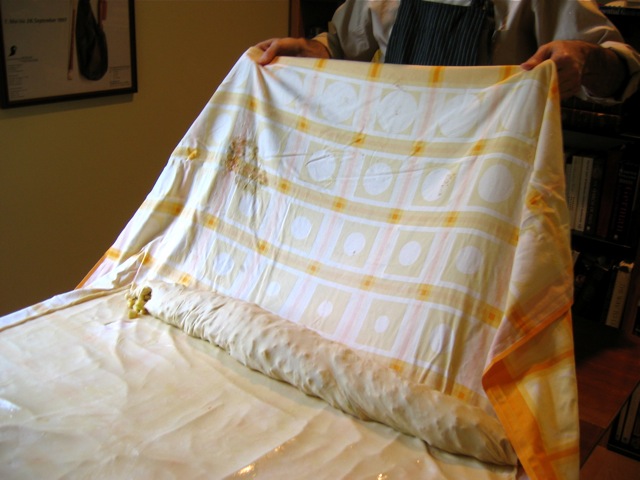
roll2, l
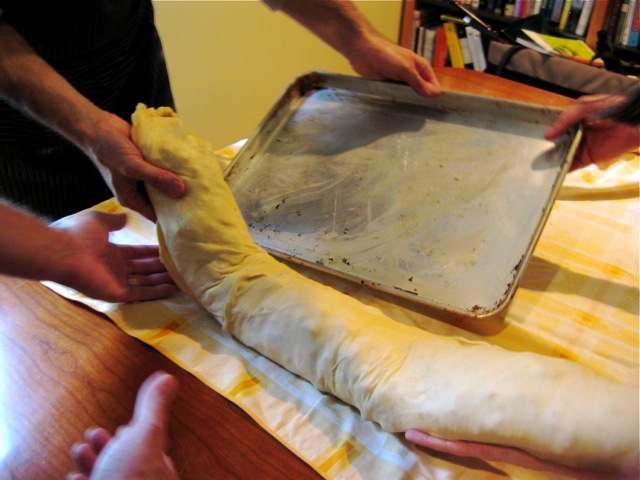
pan, l
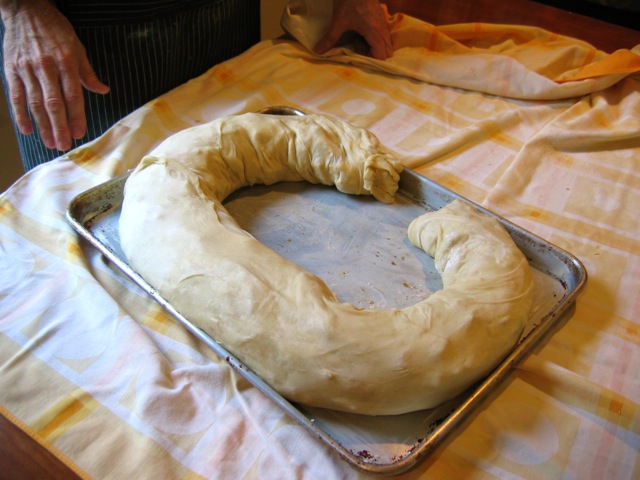
pan2, l
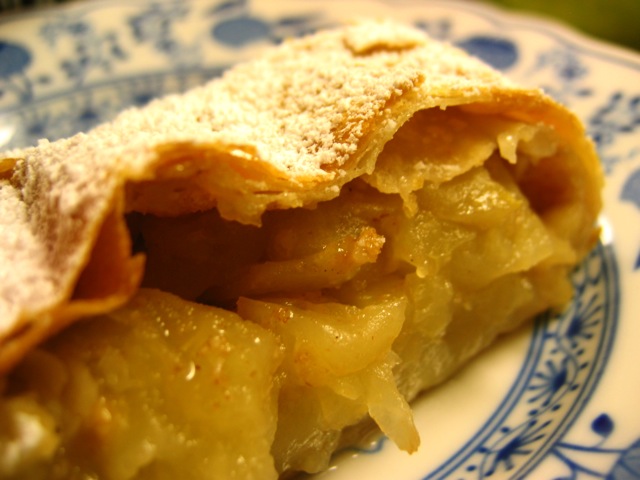
reference-image, l